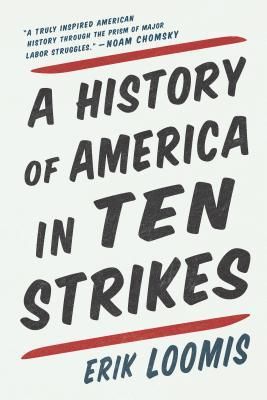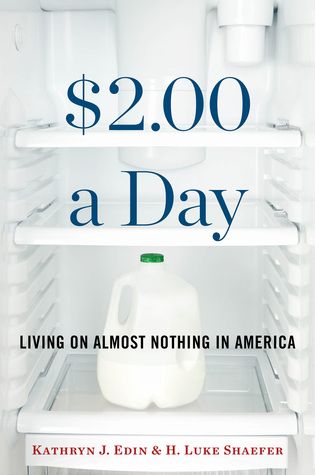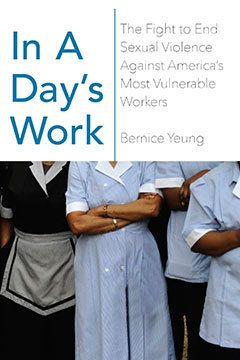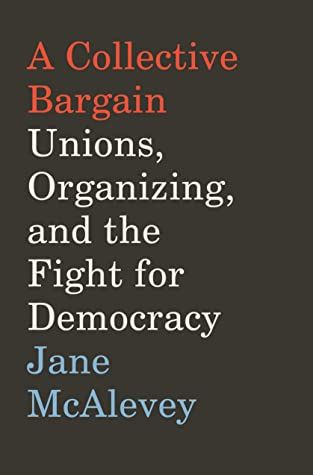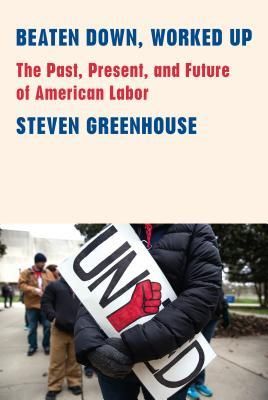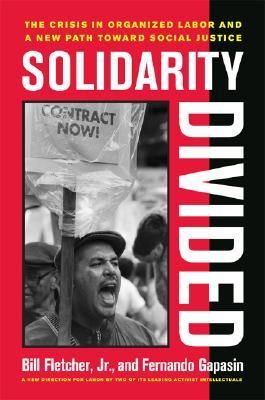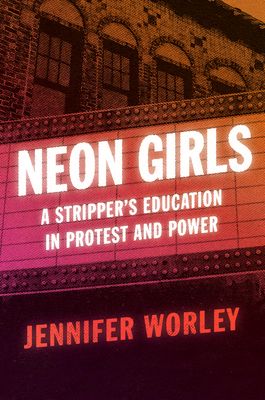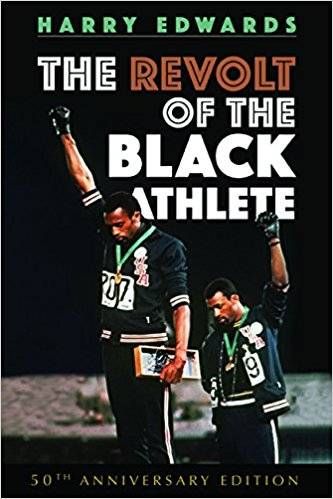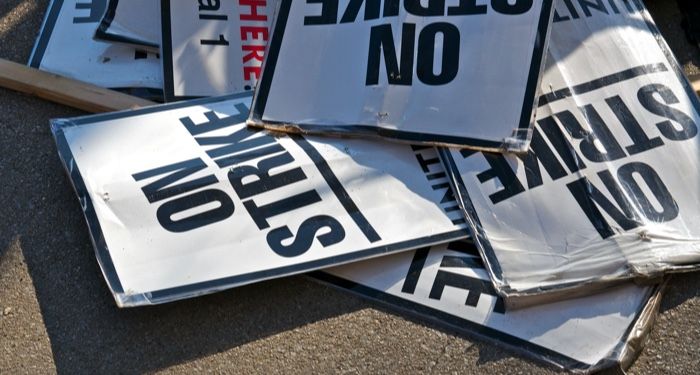
14 of the Best Books About Unions, Organizing, and American Labor
“Too often we identify with our bosses and our companies instead of with our fellow workers. Your boss is not your friend. Without a union, your boss can fire you at will. And while you might be the best worker the company has ever seen, you have no power to control your own destiny without a union.” —A History of America in Ten Strikes by Erik Loomis
Currently, our country is suffering from a crisis of unemployment and inequality. Wages have been stagnant for years. Freelance, gig, and contract work is a growing sector in the economy, but these workers remain mostly unprotected. The Federal minimum wage is $7.25/hour, but Jeff Bezos is worth $182 billion. During a pandemic that has killed nearly 300,000 Americans, supervisors at a Tyson Foods meatpacking plant were taking bets on how many employees would get COVID-19. Hazard pay for essential workers has mostly run out, and as essential workers in groceries and factories continue to put themselves in harm’s way, the extra money has not been reinstated. This year, while companies have made record-breaking profits from the pandemic, employers refuse to raise wages.
The pandemic has just highlighted the inequality that plagues this country. It was a growing inevitability that capitalism would create a system so unbalanced that while some Americans are worth billions of dollars, others do not have adequate food, housing, or healthcare.
This is why we need unions, and why we need to educate ourselves about the labor movements from the past, so we can once again learn to fight for the equality we’re being denied today.
14 Must-Read Books About Unions, Organizing, and American Labor
A History of America in Ten Strikes by Erik Loomis
In college I had an Irish professor who taught American history. Before this professor, I found American history very boring. George Washington, Thomas Jefferson, and Abraham Lincoln didn’t seem very complex, and were a lot less interesting than King Henry VIII. She reiterated my distaste, proving instead that American history was best when told through the experiences and achievements of the everyman.
That’s what labor historian Erik Loomis does in A History of America in Ten Strikes, which retells old stories through a new lens. America is a complex, fraught country, with a very bad history, so it’s sometimes hard to take any pleasure in its achievements. But Loomis, like my college history professor, wants us to see America through our labor movements—because we might have been told that Lincoln freed the slaves, but it was the collective action of slaves who just stopped working that was the actual act of freedom.
$2.00 a Day: Living on Almost Nothing in America by Kathryn J. Edin & H. Luke Shaefer
In 1990 there were 66 billionaires in America; today there are 630 with a combined wealth of $3.4 trillion.
Kathryn Edin, a sociologist and professor at Johns Hopkins, started to notice that an increasing number of Americans were living in extreme poverty. Through research, she learned that there are 1.5 million American households living on $2.00 a day. Through interviews, she starts to learn how these American are surviving on virtually no wages. This is a scathing rebuke of our current wealth gap, and a shameful indictment on an economy that can produce such huge disparities in wealth.
In a Day’s Work: The Fight to End Sexual Violence Against America’s Most Vulnerable Workers by Bernice Yeung
Immigrant women who work as janitors or farmworkers or domestic staff are often the most vulnerable to sexual violence in the workplace. These are women who work low-paying jobs and have little to no resources to fight against abuse.
In Bernice Yeung’s book, she tells the stories of some of the women who have fought back. Many of the women who step forward to report abuse are shoved aside by bureaucrats, indifference, or under- resourced government agencies; but there are stories of women who persist and beat the odds. No labor movement will ever be successful unless all workers are protected equally.
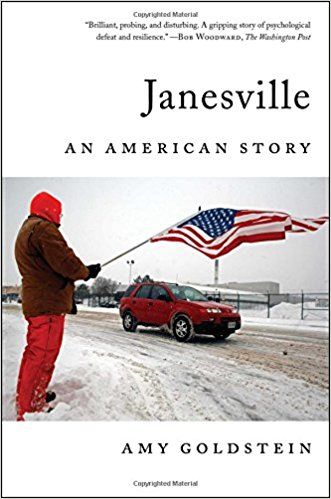
Janesville: An American Story by Amy Goldstein
I live in the Midwest. My family has been directly affected by the upheaval of the automotive industry, so stories like Janesville’s seems personal.
Janesville, Wisconsin, is Paul Ryan’s hometown, but that didn’t stop the General Motor’s plant from shutting down two days before Christmas in 2008. Many towns in the Midwest are built around one industry, and when that goes belly-up, so does the town. That’s what happened to Janesville. Virtually overnight a town lost its livelihood, and this book chronicles the toll it took on the working class, and how hard it is to rebuild after economic devastation.
A Collective Bargain: Unions, Organizing, and the Fight for Democracy by Jane F. McAlevey
A democracy is a system of government controlled by the whole population. If the government is not representing the will of the people, they can be voted out. But, if the system becomes corrupt, unions and collective strikes become another option.
Jane McAlevey is a fourth generation union activist, and a community organizer. She interviews workers around the country on how they are fighting back against an unequal system, and how collective movements are sometimes the most powerful method of communicating dissatisfaction and disgust in a racist, greedy system that does not have our best interests at heart.
Beaten Down, Worked Up: The Past, Present, and Future of American Labor by Steven Greenhouse
Wage stagnation, inequality, gender pay disparities, billionaires, bloated corporate profits—we know this is a problem, but what can we do to solve these very serious issues?
Published in 2019, Beaten Down, Worked Up includes more recent strikes like the 2018 teachers’ strikes in West Virginia, the fight for the $15 minimum wage, and shows historical strikes that have forced big change in the labor landscape. Included are stories from Americans working for different companies and how they are empowered by unions.
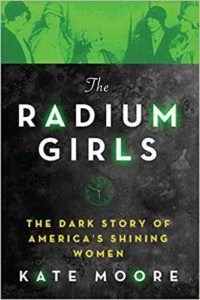
The Radium Girls by Kate Moore
Often, workplace regulations are cursed by employers as too rigorous, too strict. But Radium Girls is a good example of why your workplace needs to be regulated and held accountable.
In 1917, women went to work in factories, painting radium on items needed for the war. They asked if it was safe, and their company told them yes. Soon, they started to glow. As the years passed the women started to get mysterious deadly illnesses that were traced back to their work in the radium factories. Dying, but determined, the women who had been knowingly poisoned by their employers refused to give up without receiving justice.
Detroit: I Do Mind Dying: A Study in Urban Revolution by Dan Georgakas and Marvin Surkin
Mostly an oral history, Dan Georgakas collects the story of the Dodge Revolutionary Union Movement (DRUM) and the League of Revolutionary Black Workers, two movements that started in the 1960s and 1970s and were a response to the racist UAW and the exploitative practices of the big three auto companies in Detroit.
The ’60s and ’70s were a raucous time for both the labor movement and civil rights, and that energy was very focused in Detroit. This is a wild book about a wild time in American history and in the labor movement. Within a few pages a man working for Chrysler shoots his boss, but is found not guilty by a judge and jury because the boss was determined to have it coming. Like I said, wild!
Our History is the Future: Standing Rock Versus the Dakota Access Pipeline, and the Long Tradition of Indigenous Resistance by Nick Estes
Nick Estes is a citizen of the Lower Brule Sioux Tribe and is an Assistant Professor at the University of New Mexico. Essentially, Indigenous Resistance in American is a fight against capitalism. It is a fight to maintain autonomy and land. The Dakota Access Pipeline got the most attention, but indigenous people in this country having been resisting colonizers and corporations since Columbus got lost and landed in the “new world.” It’s a terrible history, but told from the more hopeful perspective of resistance and action.
Solidarity Divided: The Crisis in Organized Labor and a New Path toward Social Justice by Bill Fletcher Jr. and Fernando Gapasin
If you read any of these books you’ll quickly realize that the labor movement is rife with acronyms. The UAW (United Auto Workers), UMWA (United Mine Workers Association), AFT (American Federation of Teachers), PATCO (Professional Air Traffic Controllers Association), and the LRBW (League of Revolutionary Black Workers), are current and former unions that have existed in the United States. Every union protects a certain group of people, performing a certain kind of work, and sometimes that division is beneficial, but it can also be harmful to the universal cause of workers’ rights and protections. This book was published in 2008—before the recession—and examines the Bush years, globalization, racism, and the environment, and how unions need to reform in order to stay viable in a changing economy.
Neon Girls: A Stripper’s Education in Protest and Power by Jennifer Worley
Jennifer Worley needed money fast during graduate school, so she decided to get a job at the Lusty Lady Theater in San Francisco as a stripper. Quickly, Jennifer and the women she worked with started to gather and organize against discriminatory practices and management’s hidden cameras. They passed around different radical ideas, and started a union.
This is a memoir, but it is also an excellent example of what can happen when workers gather, plan, and demand change in the workplace. The union that the women started at the Lusty Lady was the first strippers’ union in the world.
Red State Revolt: The Teachers’ Strike Wave and Working- Class Politics by Eric Blanc
There are 28 states with “right-to-work” laws. These laws mean that joining a union is not compulsory when hired into a union job. It also means that an employee that opts out of the union will still be protected by the union without paying any fees. This is a law that is used to undermine established unions, and deter labor organizing. Most states that are “right-to-work” have a strong labor background, like West Virginia, Kentucky, Michigan, and Wisconsin.
This book is about the teachers who decided to strike despite their state’s attitude towards organized labor. The teachers’ strike started in West Virginia, and quickly inspired similar strikes in California, Virginia, and Colorado. A former teacher, Blanc was able to attend internal organizing meetings which provided a unique perspective on the movement.
Revolting Prostitutes: The Fight for Sex Workers’ Rights by Molly Smith and Juno Mac
Molly Smith and Juno Mac argue against the laws that criminalize sex work in the United States and around the world by first examining those laws, and then advocating for a practical examination of the laws and how they impact the most vulnerable and marginalized workers. They argue against the use of law enforcement that is advocated by some feminists to eradicate the profession and penalize the workers. This book advocates for giving sex workers more power and protections.
The Revolt of the Black Athlete by Harry Edwards
During the 1968 Olympic games in Mexico City, shortly after the assassination of Martin Luther King Jr., Tommie Smith and John Carlos, who’d won the gold and bronze medal for the 200-meter dash, raised their fists to the flag during “The Star-Spangled Banner.” They were protesting the lack of equality in sports and in American life. Earlier that year, Muhammad Ali had been stripped of his heavyweight title because he refused to go to Vietnam.
This is a history of protests by Black athletes in the 1960s and 1970s and how their courage on a national stage perpetuated movements for change. It’s also the history of Black scholar-athletes who were met with disdain and racism at the schools they attended. This is the 50th anniversary edition, so there’s a new introduction and afterward that links the story of the ’60s and ’70s to present-day athlete protests. Unfortunately, not much has changed.



